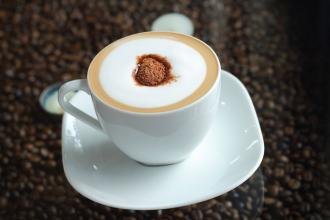The process of processing and fermentation of Ethiopian coffee by washing
The process of processing and fermentation of Ethiopian coffee by washing
Honey treatment is used in almost all the producing areas of Costa Rica. This method is also widely spread throughout Central America. Because the surface mucosa of coffee beans is extremely slippery and the sugar content is extremely high, it is often called "honey". In the process of honey treatment, coffee will leave some or all of the "honey" when it is dried. After the coffee fruit is picked, graded and peeled, it is placed on a drying bed to dry.
Because the drying time of the mucous membrane is very short, coffee beans hardly ferment during the drying process. The acidity of coffee beans processed by this method is slightly higher than that of natural washing, but much lower than that of natural washing and natural sun processing.
1 Skin/Pulp: the outermost layer of the coffee bean is covered with berry-like skin and pulp. In addition to the natural sun method, coffee beans treated by other methods must remove the skin and flesh within a few hours after picking. Similar to the cherries we often eat, the difference is that when we eat cherries, we mainly eat the pulp and peel of berries. For coffee, peel and pulp are important by-products. In some places, people use the peel and pulp of coffee to make tea. People in the industry used to call the peel and pulp of coffee "Pulp". The machine used to remove the pulp is called the "desizing machine".
Mucous membrane (Mucilage): under the peel and pulp, a layer of sticky mucus tightly wraps the coffee beans. Because this mucous membrane is extremely sticky and high in sugar, it is used to call it "Honey". Not only coffee, but also many fruits have a layer of mucus inside. You can check the relevant information at http://en.wikipedia.org/wiki/Mucilage.
Parchment (Parchment): inside the mucous membrane, a thin film of cellulose wraps the coffee beans. After drying, the film looks like parchment, hence the name.
4 Silver skin (Silver Skin/Chaff): there is a thinner film inside the parchment that covers the coffee beans. Because the color is glossy and silvery, people used to call it "silver skin". This layer of silver will fall off during baking. Usually when you grind the coffee, you find some silver crumbs in the coffee powder. These crumbs are the silver skins that fail to peel off the coffee beans during baking.
5 Coffee beans: each fruit contains 2 coffee beans (except one pod, single bean Peaberry). The fruit of this kind of coffee contains only one coffee bean. Normally, 5% of each batch of coffee beans is a single pod. Coffee beans can be roasted after drying and treatment.

Important Notice :
前街咖啡 FrontStreet Coffee has moved to new addredd:
FrontStreet Coffee Address: 315,Donghua East Road,GuangZhou
Tel:020 38364473
- Prev

Nicaraguan coffee bean flavor description grinding scale production area variety treatment taste
Nicaraguan coffee bean flavor description grinding scale production area variety treatment taste when tasting Nicaraguan coffee, it is best to drink cold water first, so that you can better feel its mellow taste. Drink coffee while it is hot, because the tannins in Nicaraguan coffee are easy to change during cooling, and the taste becomes sour, which will affect the flavor of the coffee. You can add more.
- Next

El Salvador Pacamara coffee bean flavor description method of taste treatment variety origin
El Salvador Pacamara coffee bean taste description method of taste treatment Paramara and Malakaz are both artificial hybrids, while Vera Saga and Villarobos found in Costa Rica are variants of the natural cross between Bourbon and Dibira. Costa Rican coffee has a strong impression of monotonous and sour taste, but although these two kinds of coffee are sour,
Related
- Detailed explanation of Jadeite planting Land in Panamanian Jadeite Manor introduction to the grading system of Jadeite competitive bidding, Red bid, Green bid and Rose Summer
- Story of Coffee planting in Brenka region of Costa Rica Stonehenge Manor anaerobic heavy honey treatment of flavor mouth
- What's on the barrel of Blue Mountain Coffee beans?
- Can American coffee also pull flowers? How to use hot American style to pull out a good-looking pattern?
- Can you make a cold extract with coffee beans? What is the right proportion for cold-extracted coffee formula?
- Indonesian PWN Gold Mandrine Coffee Origin Features Flavor How to Chong? Mandolin coffee is American.
- A brief introduction to the flavor characteristics of Brazilian yellow bourbon coffee beans
- What is the effect of different water quality on the flavor of cold-extracted coffee? What kind of water is best for brewing coffee?
- Why do you think of Rose Summer whenever you mention Panamanian coffee?
- Introduction to the characteristics of authentic blue mountain coffee bean producing areas? What is the CIB Coffee Authority in Jamaica?

